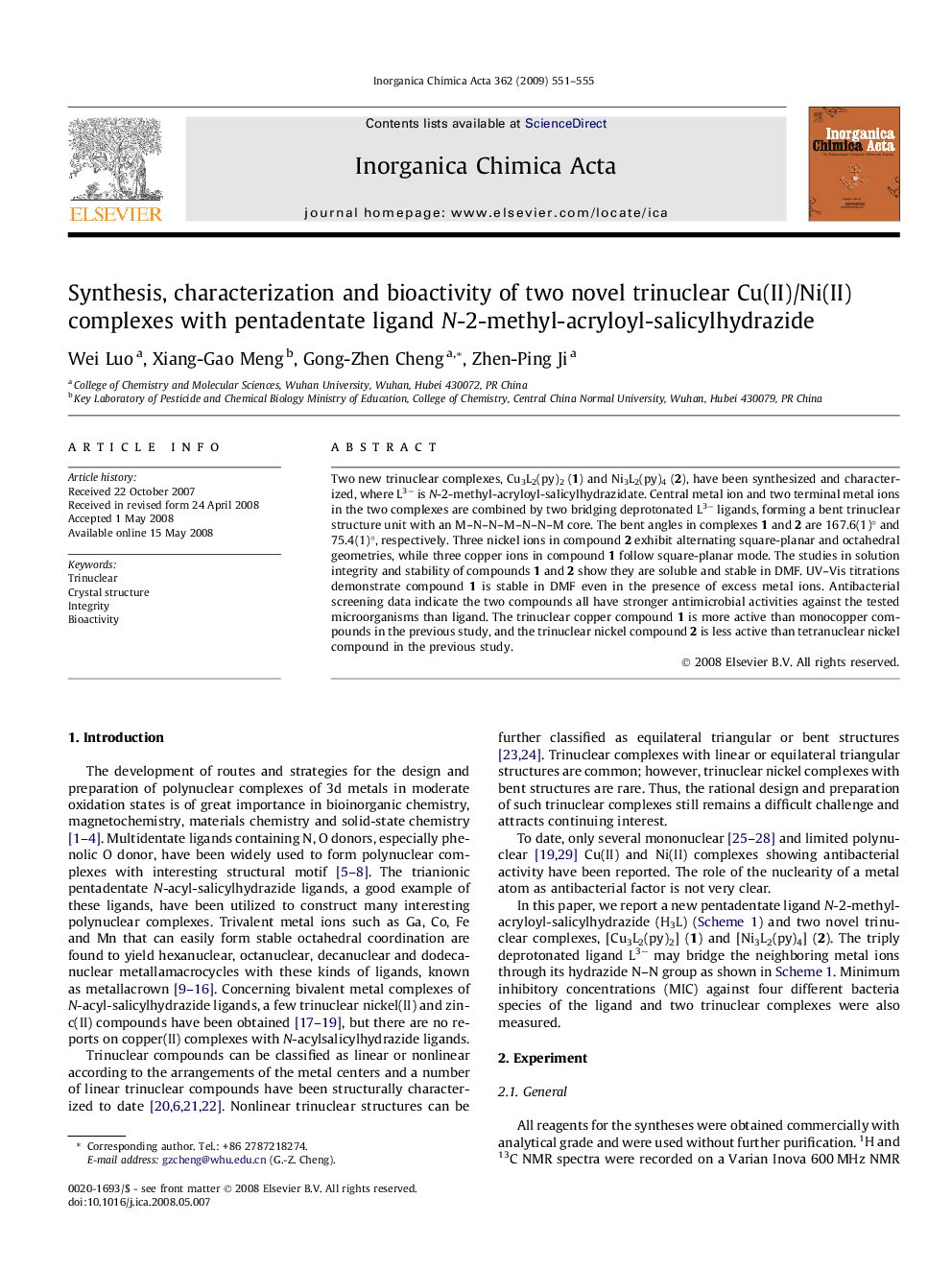| Article ID | Journal | Published Year | Pages | File Type |
|---|---|---|---|---|
| 1307167 | Inorganica Chimica Acta | 2009 | 5 Pages |
Two new trinuclear complexes, Cu3L2(py)2 (1) and Ni3L2(py)4 (2), have been synthesized and characterized, where L3− is N-2-methyl-acryloyl-salicylhydrazidate. Central metal ion and two terminal metal ions in the two complexes are combined by two bridging deprotonated L3− ligands, forming a bent trinuclear structure unit with an M–N–N–M–N–N–M core. The bent angles in complexes 1 and 2 are 167.6(1)° and 75.4(1)°, respectively. Three nickel ions in compound 2 exhibit alternating square-planar and octahedral geometries, while three copper ions in compound 1 follow square-planar mode. The studies in solution integrity and stability of compounds 1 and 2 show they are soluble and stable in DMF. UV–Vis titrations demonstrate compound 1 is stable in DMF even in the presence of excess metal ions. Antibacterial screening data indicate the two compounds all have stronger antimicrobial activities against the tested microorganisms than ligand. The trinuclear copper compound 1 is more active than monocopper compounds in the previous study, and the trinuclear nickel compound 2 is less active than tetranuclear nickel compound in the previous study.
Graphical abstractTwo new trinuclear complexes, Cu3L2(py)2 (1) and Ni3L2(py)4 (2), have been synthesized and characterized, where L3− is N-2-methyl-acryloyl-salicylhydrazidate. Central metal ion and two terminal metal ions in the two complexes are combined by two bridging deprotonated L3− ligand, forming a bent trinuclear structure unit with a M–N–N–M–N–N–M core. The bent angles in complexes 1 and 2 are 167.6(1)° and 75.4(1)°, respectively. Three nickel ions in complex 2 exhibit alternating square-planar and octahedral geometries, while three copper ions in complex 1 follow square-planar mode.Figure optionsDownload full-size imageDownload as PowerPoint slide
